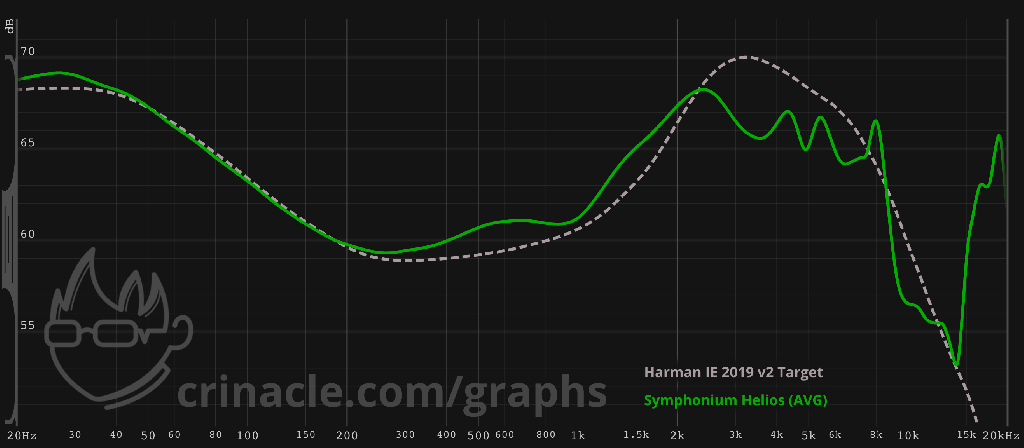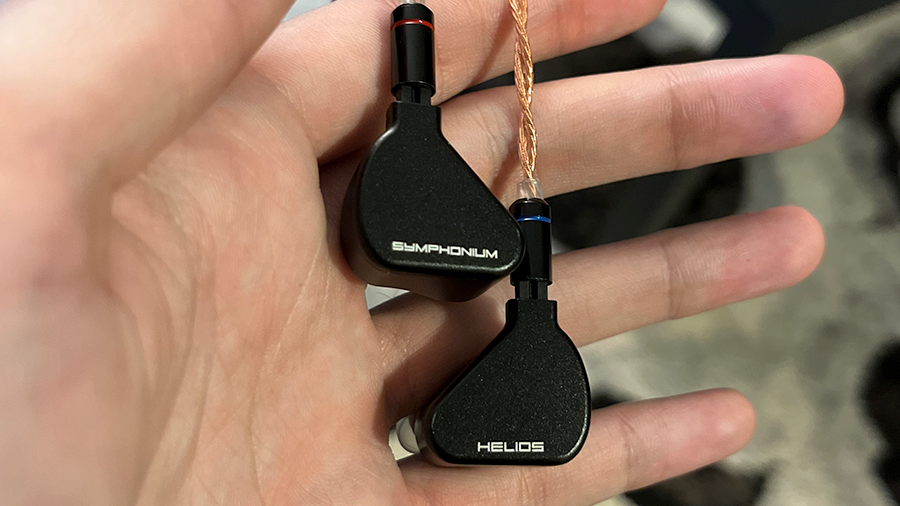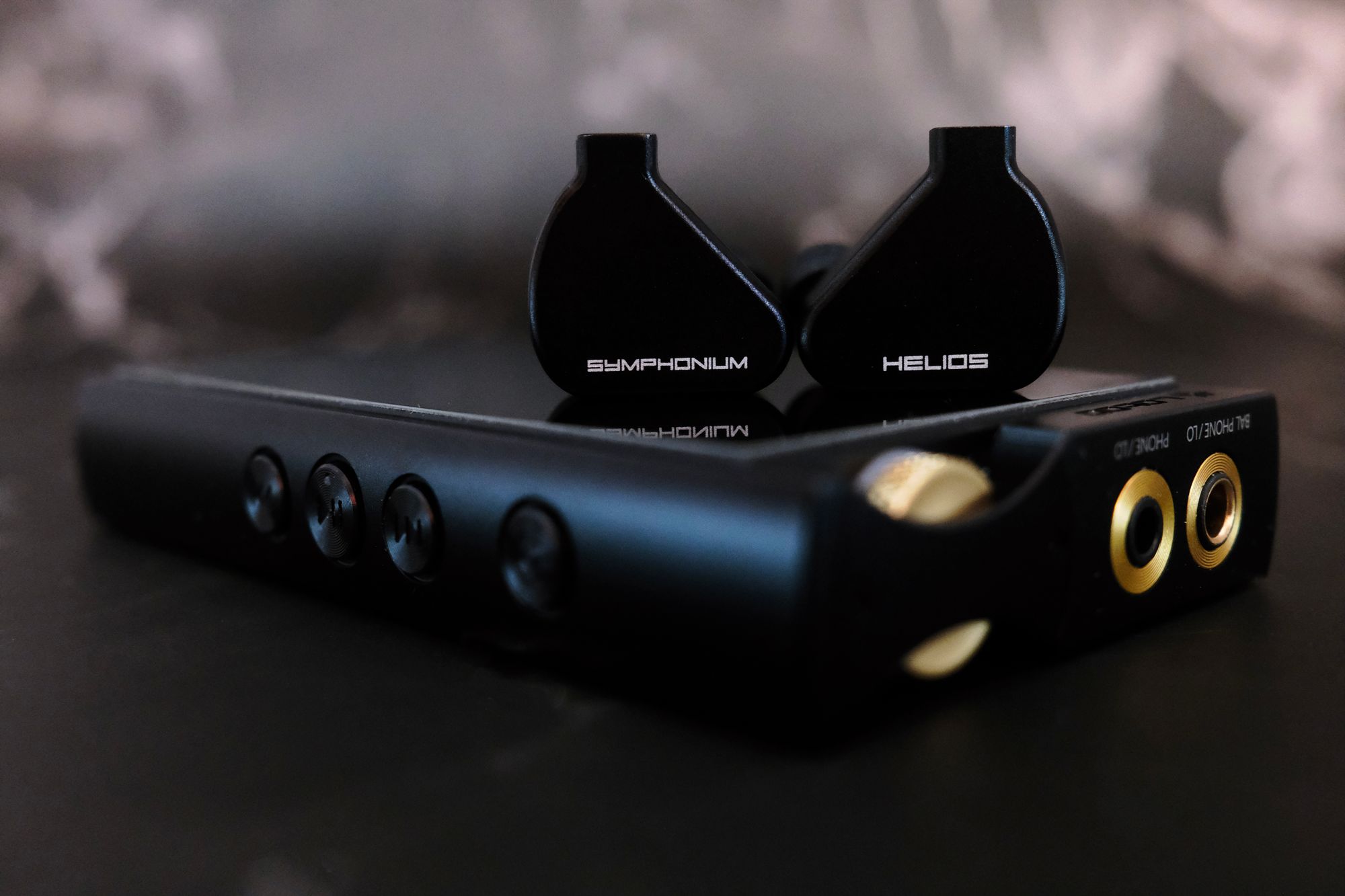I’m not an IEM person in the slightest. My first real “hi-fi” experience was thanks to a pair of Etymotic ER4P IEMs roughly 12 or 13 years ago, but I’ve always preferred the experience that a good over-ear headphone can give you, so that’s where I’ve devoted the bulk of my time, attention, and money.
Because I’m really not the type to seek out new IEM experiences or follow the market closely, I haven't heard many offerings in the current IEM market, save for a few modern classics like Sony IER-Z1r, Thieaudio Monarch MkII, 64audio U12t, and Moondrop Blessing 2: Dusk (along with a few other less storied choices here and there).
Please take this into consideration when reading this evaluation. While I think I have a good enough pair of ears on me, I’m under no delusion that I have the ability to make perfect comparisons to everything else out there, or even the things I’ve heard (to which I’m comparing by memory).
I had a chance to spend some time at home with Helios thanks to a friend of mine, and I knew upon hearing it that I'd want to write thorough impressions, mainly because it was a not-so-gentle reminder that IEMs are just as capable of giving us incredibly enjoyable experiences with audio as over-ear headphones are.
The Symphonium Helios is a 4-BA fully sealed IEM retailing at $1100 from SymphoniumAudio.com and Headphones.com. It’s a collaboration between the folks at Symphonium and Subtonic, both of which are brands made up of members active in the Singaporean & online IEM communities. The fact that this is a product made by enthusiasts is evident in both the physical aspects (like build & packaging) as well as the sonic characteristics, but I won’t really be touching on the physical aspects here. There are other places for that, like the "Tangibles" section in Precog's excellent review... and I just want to talk about the sound—and there’s plenty to unpack there—so let’s get into it!
Testing Setup
My time with Helios was almost entirely spent using Spinfit CP100 tips, as I preferred them to the included Azla Sedna or Symphonium tips. I tested Helios with a variety of sources, from my phone with an Apple dongle, my Macbook Pro’s headphone output, Apple and Meizu dongle out of Macbook Pro, and my desktop stack (Dangerous Music Source > Bryston BHA-1), the latter of which is my favorite and most oft used setup because it imparted a better sense of note weight and heft than my portable sources, and unlike many IEMs, Helios is insensitive enough to actually be used on a desktop stack without much fuss.
Frequency Response and Tonality

Helios’ tonality and frequency response (FR) can be described differently depending on what your reference is. As far as what reference best equips me to analyze my likes/dislikes regarding Helios’ tonality, I prefer to think about Helios relative to Harman’s 2019 In Ear target instead of something like Crin’s IEF Neutral target.
I hear Helios as “Harman bass shelf, emphasized center-mids, dipped upper mids, even and well-extended treble.” Thinking about it relative to IEF Neutral, and therefore as “dipped lower mids, boosted sub-bass” doesn’t really cohere with my sensibility of what is actually presented here. In general, Crin’s target is more often a miss than a hit for me analytically, mostly because it has too much between 1-2kHz for my idea of neutrality.
There are things I really really love about this tuning, but I don’t quite think it’s perfect. Let’s talk about the things I love about its tuning first:
The Good
The bass is big but unobtrusive, sporting an almost +10dB shelf, while being nowhere near bleeding into the midrange past 240Hz. Kick drums sound authoritative and snappy, with a balance between attack/click and boom/thump not seeming to overwhelmingly favor one over the other. Bass, both plucked and synthesized, sound full and rich; thankfully the fundamentals have enough emphasis over harmonics to be sonorous and big, but without sacrificing overtone definition or texture.
The midrange is wholly unencumbered, absent any mud, haze, or indistinctness, and is portrayed extremely directly without being fatiguing or harsh. One of my favorite things about this aspect of Helios’ tuning is how the overtones of bass instruments sound extremely textured, which I believe is in large part due to their elevated center-midrange. For example, the main synth bass on Radiohead’s All I Need sounds monolithic, harmonically-complex, crackling, and colorful in a way I’ve only ever heard on transducers with a slight W-shape to the frequency response; I love how Helios colors the presentation of that aspect of this song while still keeping the bass firmly and unapologetically bassy.
Strings are one of the instrument groups on Helios that mostly just sound effortless; there's no weird bloat, and no weird over-sharpening of scratchy textures in the treble. Whether they’re bowed or plucked, they always seem to have a gloss (and not a glaze) to their presentation.
Snare drums sound crackly and energetic, again without sounding harsh, boxy, or overly hard. It's also worth mentioning that I don’t detect a single hint of grain on basically anything I throw at Helios, which to me says the way it handles upper midrange-to-treble integration is about as good as anything else out there.
Speaking of treble… damn. Damn. DAMN. This is my favorite part of Helios, no question. The sheer amount of clarity on tap without having any errant peakiness or splashiness really just makes for such an effortlessly exciting character to the presentation, both technically (which we’ll get to) and tonally. Cymbals sound more correct in energy on these than on just about anything I’ve heard, in-ear or otherwise. The knock of a ride cymbal is perfectly balanced with its sizzle, the clang of a crash is balanced perfectly with its splash, the “thock” of the hi-hat is balanced perfectly with its shimmer. If you are a treble-lover (and most people who know me know I am not), this is easily one of the best presentations, if not the absolute best, I’ve heard for treble in any transducer.
The Bad
As far as my criticisms, there are definitely a few. Electric guitars sound a little too mid-emphasized relative to my idea of neutral, but I concede that more forward coloration can work for electric guitars a lot of the time (especially distorted ones).
Vocals in general can sound a bit too megaphoney and lean. Male vocals in particular lack a warmth and size that they should have, and female voices just sound a little too clenched and shouty.
Brief aside: When we humans yell or shout, the balance between fundamental and harmonic in our voice is altered in such a way that the overtones between 500-1600Hz start to overtake the fundamental in volume. That’s what I hear here, not so much the 2-4kHz elevation that people usually refer to as “shout.”
Pianos generally sound too cacophonous for me on Helios. It works well for softly played pieces (helps to bring them forward a bit and sound less distant/dark) but here again, they’re often lacking in warmth for my taste.
I think the thing I was most disappointed in re: Helios’ tuning was its portrayal of acoustic guitar. Morning by Beck has a warm, yet effortlessly clear and “big” sounding guitar performance as the centerpiece of the arrangement, and Helios just made it too boxy and midrangey to really feel the coziness or size of the instrument, and thus Helios' tonality kind of mars the calming expanse of the arrangement on the whole as I usually perceive it.
Something Precogvision talks about in his excellent review is how the integration seems slightly off from bass to mid to treble, and I’m inclined to agree somewhat. The midrange integration seems to be the culprit in basically all of my complaints about Helios; there’s just a hair too much contrast between the center midrange and bass, where a little less center-midrange (or a little more low-midrange) would help the whole FR jell a bit better. Where Helios really shines is above 2kHz, and that’s where it beats out literally pretty much everything I’ve ever heard in an IEM, tuning-wise.

Detail/Resolution
Small Disclaimer: All of my time with ≥ kilobuck IEMs until now has been extremely brief, and as such, I don’t really have much conclusive to say in terms of how detailed these are relative to their competition.
Small disclaimer aside, Helios seems to be an extremely resolving IEM, to the point where I think it’s likely that if you want detail above all else in an IEM, this is probably the cheapest you can go to get anywhere near flagship level for that.
Reverb tails are weirdly very discernible with Helios, shockingly so when you’re not used to that in an IEM like me. Definition in all elements, loud and quiet, is clearly delineated and all of the textural nuances, even in much smaller cues, is almost cloyingly easy to pick out. The images are clear as day, and the ease of picking out smaller cues is easier than anything else I've heard in the in-ear monitor space, including the UM Mest Indigo and 64audio U12t.
Dynamics
One of the biggest surprises with this pair is how capable it is when it comes to both macro and micro dynamics. In the realm of the former, the feeling of moving mass in large volume swings for entire sections of the arrangement is very good, to the point where I think it’s easily more incisive and big sounding than even something like Blessing 2:Dusk, and just about competes in "explosiveness" with IER-Z1r (both of which use a DD for the bass). Though it certainly doesn’t sport the feeling of note weight tonally of either of these picks, I feel like the sense of mass behind movements of the music is still undeniably palpable and engaging.
Perhaps unsurprisingly given the tonal character of Helios, I feel like it’s even better when it comes to microdynamics and grip. For example, when listening to modern pop songs with loads of little percussive tinks and tonks throughout the arrangement, it’s not only easy to tell what each thing sounds like independently of each other (which is equally a textural resolve/timbre thing), but it’s extremely easy to tell how they’re swinging with minor changes volume/tempo to create a sense of it being “played” by a musician as opposed to programmed. Echo on guitars and vocals seem to taper off evenly but it also seems like all of the echos trail off longer than I remember them doing prior.
As far as slam goes… sheeeeesh. Helios slams for sure. It’s more of a "nimble featherweight" boxer than a heavyweight, though; Helio isn't the hardest hitter out there, but every hit seems just about as heavy as it possibly could be given how quick and precise it is.
As far as other dynamic IEMs go, I think IER-Z1r has a more nuanced approach to slam, where I feel the diversity of "types" of impact is shown off a little more, while Helios’ character tends to homogenize the front end of notes to all sound like they attack in a somewhat similarly snappy way; Helios’ attack transients all tend to sound similarly sharp, which makes it consistently engaging and fun, but not necessarily as accurate or true to life as something like IER-Z1r is.
Soundstage and Imaging
Helios shows itself to be a top performer in yet another technical metric: The sense of stage size is surprisingly big front to back, where it actually does leave your head and project in front and behind you (though only slightly, we’re still in IEM land here, folks), as well as bottom-to-top, where vocals tend to sit neatly above the rest of the mix when such a presentation is called for.
Lateral width is the thing likely least impressive about the staging here, but it’s still better than what I expect of most IEMs. The images within that stage are presented with a laser-focused precision, with no strange holes in the space, and have a structural coherence unlike any IEM i’ve ever heard. Every unit in the space is singular and in its own focused and distinct location, with no smear or decoupling based on different areas of an instrument’s FR going one direction or another.
Something I never feel compelled to talk about but I can’t help but notice here: Helios is one of the only IEMs I’ve ever heard that I think would be awesome for gaming too. It gives you the sizable bass boost for immersiveness, but the overall presentation is so bereft of excess bloat and so revealing of small changes in the treble that I could see it being excellent for hearing footsteps and environmental sounds in games too.
Small non-audiophile-approved tangent aside: no issues with the presentation here... in fact I give Helios high marks nearly across the board in the imaging and stage department.
Timbre
This is where Helios stumbles in my opinion. Though there are many things to love about Helios, I would never recommend them to someone who prioritizes timbre above all else. Helios definitely sounds like a balanced armature IEM, though the bass is probably the only thing that comes close to eschewing that aspect of its presentation due to the solid impact at play here. In general though, the timbral presentation overall is pretty much entirely cold, lean, and somewhat mechanical. Just about everything gets, again, homogenized to sound all kind of similarly tight, lean, sharp, fast, etc.
It’s not necessarily an overly-dry or lifeless presentation across the board, but instruments and voices both always sound like an almost digitally-sharpened and enhanced version of themselves. If you listen to mostly acoustic, jazz, folk, or classical/orchestral music and really like to connect with the sense of timbral realism afforded to you by your peripheral of choice, I cannot in good conscience recommend Helios. But if you listen to a lot of electronic music, or really any modern music not building its identity entirely off of "organic" instrumentation, this might just be your endgame.

Conclusion
In short, if you care most about timbre and the tonality doesn't seem like a good fit for you, don't buy Helios. However, if you are one of the people looking to hear (or spend ~$1000 bucks on) an IEM with price range leading technical performance across the board... that's Helios, and I can't really think of anything else that comes close. It handles literally every technical aspect but timbre almost flawlessly, and its tuning is no slouch either (Note: I want this treble forever).
Helios is made by enthusiasts, and it shows. If this is Symphonium's first >kilobuck product, I’m legitimately scared to hear what their model above this will be. Both because, like Helios, it will likely be a market disruptor... and because I didn’t plan on spending big money on IEMs anytime soon. Helios had me considering it more than once.
Comments?
Leave us your opinion.